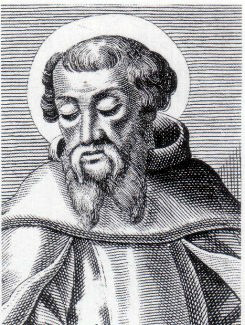History of the Catholic Church
History of the Catholic Church
The History of the Catholic Church traces the development and growth of the Catholic Church, the largest branch of Christianity, from its beginnings as a small group of followers of Jesus Christ in the 1st century AD to its status as a global religious institution. The history of the Catholic Church is integral to the history of Christianity and the broader history of Western civilization.
Origins and Early Christianity[edit | edit source]
The Catholic Church considers its foundation to be tied to the ministry of Jesus Christ, who lived in the 1st century in the region of Palestine. According to Catholic tradition, Jesus appointed the Apostle Peter as the first Pope, entrusting him with the keys to the kingdom of heaven (Matthew 16:18-19), thereby establishing the first Papacy. After the death and resurrection of Jesus, the Apostles began to spread his teachings, forming the first Christian communities.
The Patristic Period[edit | edit source]
The period from the 2nd to the 5th century is known as the Patristic Period, during which the foundations of Catholic doctrine were laid. Early Church Fathers, such as Saint Augustine and Saint Jerome, played significant roles in the development of Christian theology, the establishment of the Bible's canon, and the fight against heresy. This era also saw the first Ecumenical Councils, which addressed theological disputes and defined key elements of Christian belief.
Medieval Period[edit | edit source]
The Medieval Period of the Catholic Church, from the 6th to the 15th century, was marked by the spread of Christianity throughout Europe, the establishment of monastic orders like the Benedictines, and the rise of Papal supremacy. The Crusades, a series of religious wars initiated by the Church, were also a significant aspect of this period. The Scholasticism movement, led by figures like Thomas Aquinas, sought to reconcile Christian theology with classical philosophy.
The Reformation and Counter-Reformation[edit | edit source]
The 16th century was a tumultuous time for the Catholic Church, marked by the Protestant Reformation, initiated by figures like Martin Luther. In response, the Church initiated the Counter-Reformation, which aimed to reform the Church internally and reaffirm Catholic doctrine. The Council of Trent played a pivotal role in this period, enacting reforms and defining Catholic teaching in opposition to Protestant challenges.
Modern Era[edit | edit source]
The modern era of the Catholic Church has been characterized by a series of reforms and a focus on social issues. The Second Vatican Council (Vatican II), held from 1962 to 1965, brought significant changes to the Church, including the use of vernacular languages in the liturgy and a new approach to relations with other religions. Recent Popes, such as Pope John Paul II, Pope Benedict XVI, and Pope Francis, have focused on themes such as social justice, the importance of family, and the need for dialogue with the modern world.
Conclusion[edit | edit source]
The history of the Catholic Church is a complex tapestry of theological development, cultural influence, and institutional growth. From its humble beginnings in the Roman Empire to its current status as a global faith, the Catholic Church has played a pivotal role in shaping the course of history. Its rich history is a testament to its enduring influence and the continued relevance of its message.
This article is a Christianity-related stub. You can help WikiMD by expanding it!
Search WikiMD
Ad.Tired of being Overweight? Try W8MD's physician weight loss program.
Semaglutide (Ozempic / Wegovy and Tirzepatide (Mounjaro / Zepbound) available.
Advertise on WikiMD
|
WikiMD's Wellness Encyclopedia |
| Let Food Be Thy Medicine Medicine Thy Food - Hippocrates |
Translate this page: - East Asian
中文,
日本,
한국어,
South Asian
हिन्दी,
தமிழ்,
తెలుగు,
Urdu,
ಕನ್ನಡ,
Southeast Asian
Indonesian,
Vietnamese,
Thai,
မြန်မာဘာသာ,
বাংলা
European
español,
Deutsch,
français,
Greek,
português do Brasil,
polski,
română,
русский,
Nederlands,
norsk,
svenska,
suomi,
Italian
Middle Eastern & African
عربى,
Turkish,
Persian,
Hebrew,
Afrikaans,
isiZulu,
Kiswahili,
Other
Bulgarian,
Hungarian,
Czech,
Swedish,
മലയാളം,
मराठी,
ਪੰਜਾਬੀ,
ગુજરાતી,
Portuguese,
Ukrainian
Medical Disclaimer: WikiMD is not a substitute for professional medical advice. The information on WikiMD is provided as an information resource only, may be incorrect, outdated or misleading, and is not to be used or relied on for any diagnostic or treatment purposes. Please consult your health care provider before making any healthcare decisions or for guidance about a specific medical condition. WikiMD expressly disclaims responsibility, and shall have no liability, for any damages, loss, injury, or liability whatsoever suffered as a result of your reliance on the information contained in this site. By visiting this site you agree to the foregoing terms and conditions, which may from time to time be changed or supplemented by WikiMD. If you do not agree to the foregoing terms and conditions, you should not enter or use this site. See full disclaimer.
Credits:Most images are courtesy of Wikimedia commons, and templates, categories Wikipedia, licensed under CC BY SA or similar.
Contributors: Prab R. Tumpati, MD





